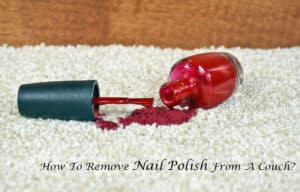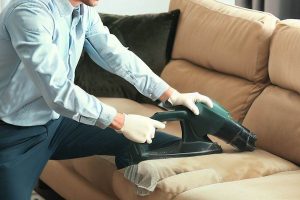Sofa cushions can quickly become dirty and dingy. But don’t throw in the towel just yet. With a few simple steps and supplies, you can have your couch looking like new in no time.
So start rolling up your sleeves and let’s get to work cleaning those cushions with our Nousdecor guide on How To Clean A Sofa Cushion!
Key Takeaways of How To Clean A Sofa Cushion
- Identify the fabric type of the cushion (cotton, velvet, leather)
- Select cleaning products based on fabric type
- Thoroughly vacuum each cushion, including all sides
- Apply stain-repellant spray every six months for protection against spills and dirt
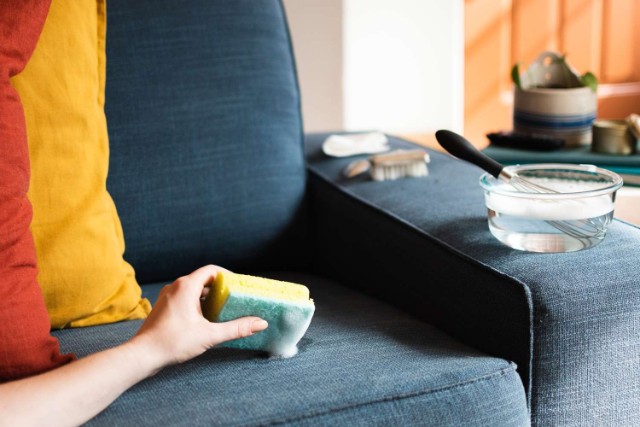
Preparing the Supplies for the Cushion
Preparing the cushions on my sofa can seem daunting at first, but with some knowledge of the fabric type and the right cleaning products, it’s actually quite simple.
First, identify the fabric type of your cushion – is it cotton, velvet or leather?
Then prepare your cushions by removing any dust or dirt from them.
Identify the Cushion Fabric Type
Identify what type of fabric your sofa cushion is made of before you begin cleaning it. The most common fabrics used for couch cushions are microfiber, velvet, cotton, and leather.
If your sofa has a removable cover, check the tag on the underside of the cushion to determine what kind of fabric it is made from. In case there is no label, try to identify the material by feeling its texture. For example, microfiber sofas are usually soft and velvety, while a fabric sofa may have a rougher feel.
Once you know the fabric type, read up on specific care instructions. Some materials like leather or suede require special cleaning solutions or should not be washed in a washing machine.
Prepare the Cushions
Before you begin, make sure you know what type of fabric your couch cushions are made from so you can clean them correctly. It is important to prepare the cushions for cleaning by:
- Removing cushion covers and washing separately with a stain remover
- Vacuuming the couch using an appropriate vacuum cleaner attachment
- Sprinkling baking soda on the cushions to remove odors
- Spot cleaning any stains on microfiber couches with warm water and a mild detergent.
Once the cushions are prepared, you are ready to choose the right cleaning products.
Choosing the Right Cleaning Products
Once the cushions are prepped, it’s important to select the best cleaning products for your fabric type.
For delicate fabrics, a mixture of baking soda and water can be used in a spray bottle. If bleach is needed for tougher stains, use only a 10% solution and test it in an inconspicuous area first.
For general dirt and grime, dishwashing liquid mixed with warm water is enough to get the job done. When using any chemical product, make sure to read all safety instructions before applying it to your sofa cushion.
All of these materials should be tested on an inconspicuous area first so that you don’t inadvertently damage your upholstery.
With the right cleaning supplies at hand, you’re ready to pre-clean your cushions with a vacuum cleaner for optimal results.
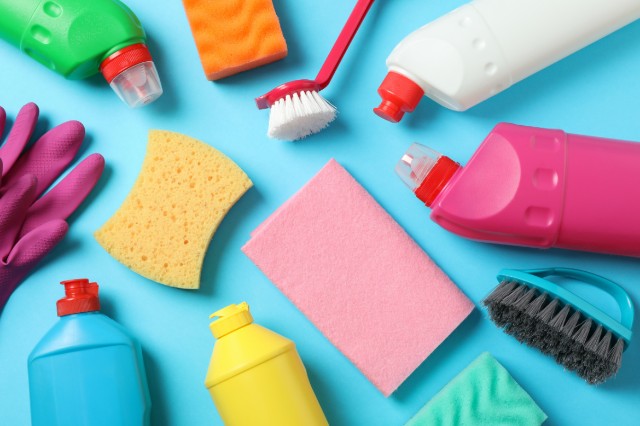
Pre-clean your Cushions with a Vacuum Cleaner
Start by vacuuming your cushions to remove any dirt and debris. This is also a great time to check underneath the cushions for anything that may have been hidden away.
My top tips for pre-cleaning are:
- Give each cushion a thorough vacuuming, ensuring all sides are done.
- Use an upholstery brush attachment to get into the crevices of the fabric.
- Utilize a dusting brush or lint roller to remove any pet hair.
- Focus on areas around seams and buttons that can trap dirt more easily.
Once you’re finished, move onto testing your cleaner before applying it onto the cushions.
Test Your Cleaner Before Applying
Before cleaning your cushions, it’s important to test the cleaner you’re using on a hidden area of fabric to make sure it won’t damage or discolor them. This will help you confirm that the cleaner is safe and appropriate for your sofa fabric.
Rub a small amount of the cleaner onto an inconspicuous part of the cushion, then wait for a few minutes and wipe it off with a damp cloth. If there isn’t any change in color or texture, then you can feel confident using it throughout the rest of your cleaning process. Otherwise, choose another product to try out before beginning.
Once you’ve tested and approved your chosen cleaner, it’s time to move onto pre-treating heavily stained or soiled areas.
Pre-treat heavily Stained or Soiled Areas
Before applying the cleaner to heavily stained or soiled areas, it’s important to pre-treat these spots.
I’ll start by applying an appropriate cleaner directly onto the stain and then use a clean cloth to blot up any excess liquid.
Doing this helps break down the stain molecules so that they can be removed more easily with standard cleaning methods.
Apply the Cleaner
Once you’ve vacuumed the cushion, it’s time to apply the cleaner. You’ll need a soft cloth or sponge and a cleaning solution designed just for upholstery. Before you start, test any cleaner on an inconspicuous area of the fabric to make sure it won’t discolor or damage it.
- Dilute the cleaning solution according to package directions
- Apply a light layer over the entire surface of the cushion
- Rub gently in circular motions with your cloth or sponge
- Focus on heavily stained areas, scrubbing lightly if necessary
With that done, you’re ready to move onto blotting out those stains.
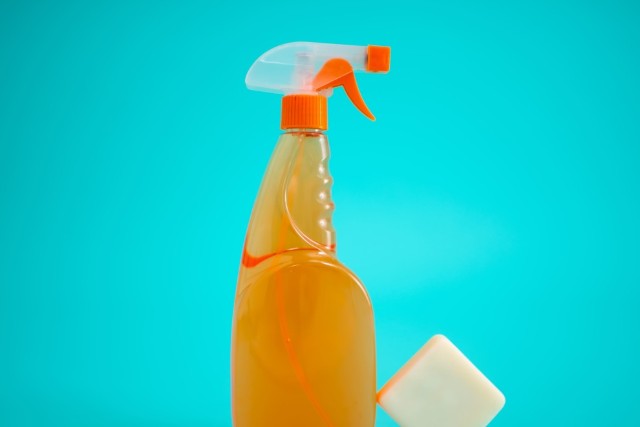
Blot the Stains
To blot out the stains, dampen a soft cloth or sponge and press it firmly against the stained areas. Make sure to use gentle pressure as scrubbing too hard could cause more damage. Move the cloth or sponge in a circular motion to ensure all of the stain is absorbed.
When you’re finished, take another clean, dry cloth and lightly dab at the area to remove any remaining residue. This will help prevent permanent staining from setting in and make cleaning easier in the future.
Once done, move onto washing the cushion for a deep-down clean.
Washing the Cushion
Start by washing your sofa cushion. For a thorough clean, it’s best to use the gentle cycle on your washing machine and opt for cold water and a mild detergent. It’s also important to avoid overloading the washer as too much weight can damage the machine or cause fabric fading.
To ensure optimal cleaning for restoring sofa cushion volume:
- Set your machine on the gentlest cycle available.
- Use only cold water.
- Ensure not to overload the machine with too much weight.
- Use a mild detergent or fabric cleaner specifically designed for upholstery fabrics.
After all of that is done, it’s time to move onto drying your cushion in preparation for re-installing it onto your sofa!
Drying the Cushion
Once the washing is done, it’s time to dry your cushion. You can hang it up outside on a clothesline or prop it up against something in a sunny spot indoors. Make sure that the cushion isn’t in direct sunlight for extended periods of time though as this can cause fading.
If you find yourself with an indoor only option, you should make sure to rotate and flip the cushion over every few hours as that will help it dry more evenly and quickly.
Once your cushion is dry, you’ll want to take steps to prevent future stains from occurring for some DIY sofa cushions for comfort.
Preventing Future Stains
Now that the cushion is clean and dry, I want to make sure it stays that way.
To maintain the fabric, I’ll need to vacuum regularly and spot-clean any spills as quickly as possible.
Additionally, I can utilize extra fabric protection such as Scotchgard or other products designed to repel liquids and dirt.
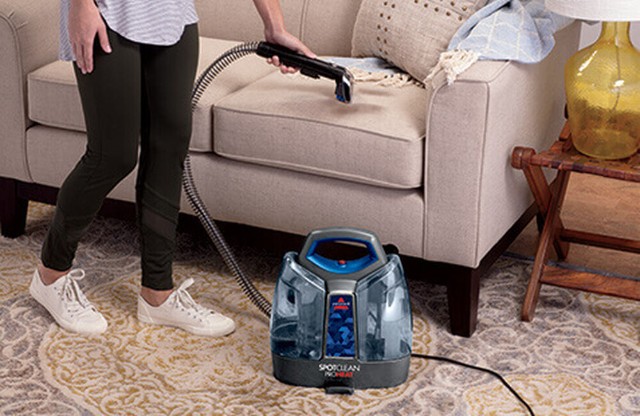
Maintaining the Fabric
To maintain the fabric of your sofa cushion, regularly vacuum it and spot clean spills as soon as they occur to enhance sofa cushion support and firmness. Additionally, you should:
- Rotate the cushions to reduce wear on any one area.
- Have it professionally cleaned every 12-18 months.
- Consider using a stain repellant spray or fabric protector for extra protection.
- Regularly fluff the cushion’s filling to retain its shape.
Taking these steps will help keep your sofa looking new and make sure you get maximum use out of it, making it as durable as feather cushios (see how long do feather sofa cushions last). Utilizing extra fabric protection is another great way to do so.
Utilizing Extra Fabric Protection
Using a stain-repellant spray or fabric protector can help extend the life of your cushion and keep it looking new. Before applying any product, make sure to read the instructions on the label and test it on an inconspicuous area first.
I recommend applying this protection every six months to ensure that your cushions are well-protected against spills and dirt. Also, be sure to vacuum regularly in between applications to remove any built-up dirt or debris.
If possible, avoid sitting directly on the cushions after they’ve been sprayed with fabric protector as this could affect its performance and longevity so that you don’t have to start retrieving things from couch gaps ever.
Finally, if you choose to use a sprayable cleaner, apply it evenly across the entire cushion for maximum effectiveness. And if your cushions are beyond hep, start Replacing Cushions On Sofa now!
Frequently Asked Questions
Conclusion
I’ve successfully cleaned my sofa cushion and I’m feeling great! It was surprisingly easy to do, taking only about an hour from start to finish.
One interesting statistic: the average person spends more than 60 hours a year cleaning their home, so investing in some quality cleaning supplies is always a good idea!
Now that I know how easy it is to clean a sofa cushion, I can spend less time scrubbing and more time enjoying my freshly-cleaned furniture. And if you’re interested in getting a brand new sofa, start selecting the right sofa for your home on our website now!



